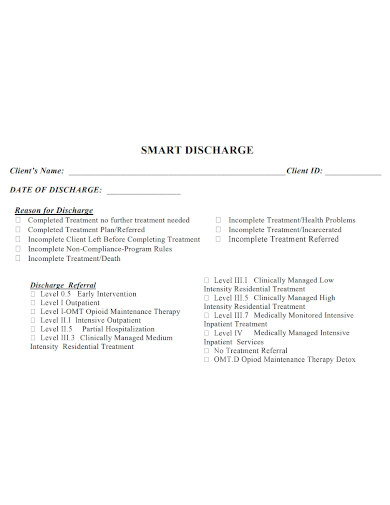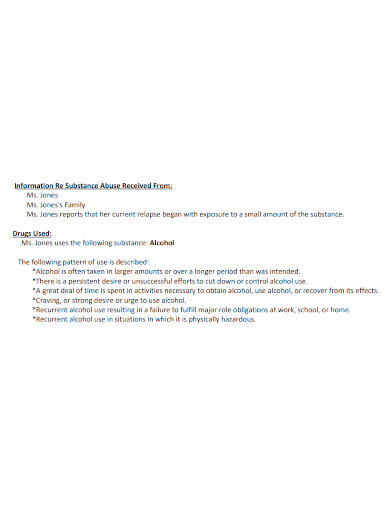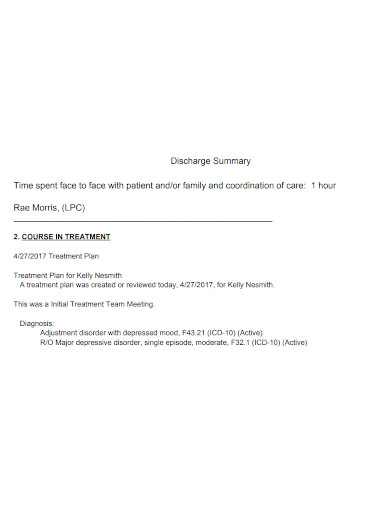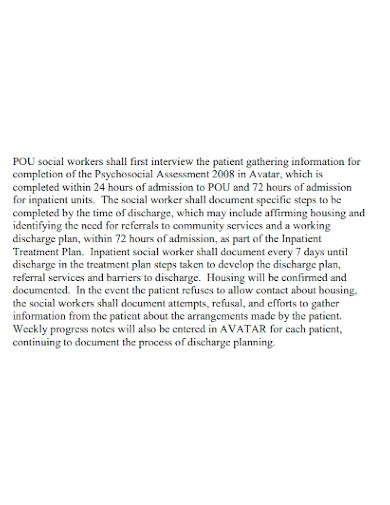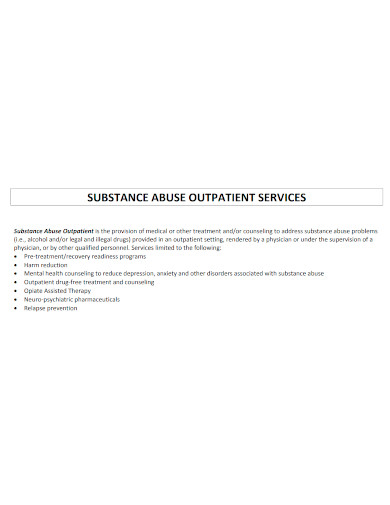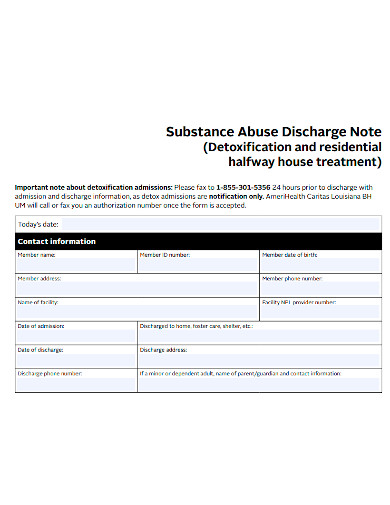Substance abuse is not an uncommon thing people tangle themselves into. Most of the time, it comes to the point where people need medical intervention with their problem. Most of them get better with treatment from rehabilitation centers but once they are good and ready to be discharged, their old habits will make a comeback. To avoid this, they must have a discharge plan to guide them to continue their journey to a sober life. This article can help give you tips on how to make a discharge plan with sample templates to refer to.
6+ Substance Abuse Discharge Plan Samples
1. Substance Abuse Discharge Plan Sample
2. Substance Abuse Smart Discharge Plan
3. Printable Substance Abuse Discharge Plan
4. Standard Substance Abuse Discharge Plan
5. Formal Substance Abuse Discharge Plan
6. Substance Abuse Outpatient Discharge Plan
7. Substance Abuse Discharge Plan Form
Importance of Having a Substance Abuse Discharge Plan
According to Medicare, discharge planning is a process that is done to decide what a patient should do when transitioning from being admitted to a facility and going back to the outside world. Putting a detailed plan on what to do and where to go after rehabilitation can help promote peace of mind and boost confidence for a recovering patient. The discharge plan must focus on their maintenance on still getting help and support from therapists, family, and friends and to also live like normal once again minus their vices. The goal is to stay clean and live a stable life despite being discharged from in-patient therapy.
How to Make a Substance Abuse Discharge Plan
These are the following tips to put in the discharge plan:
- Stay active: The next chapter of living life outside rehab depends on the patient. But the main responsibility he can do is paying more attention to their health. The patient must exercise daily; such as going outside to do aerobic exercises and do yoga and meditation. These exercises are good for physical and mental health.
- Boost social life: The patient should also boost their social well-being by continuing their hobbies, go on adventures, and hang out with people like their friends and family. These people can help support the patient by guiding them on not to return to their bad habits and prevent them from letting the patient assimilate to the triggers or people that caused their addiction.
- Spend more time with family: This is also the perfect time for the patient to reconnect and seek support for their family members. Depending on the relationship the patient has with their family, the family could help the patient stick to the discharge plan. There should be therapy and counseling sessions for both the patient and their family to help deal with their issues and make their bond grow stronger.
- Continue therapy: The treatment plan for the patient is important and must not be excluded from the discharge plan. The patient should always be in touch with their therapist and their psychologist to evaluate their improvements and struggles. The therapist could also manage the patient’s issues and their medication intake.
- Find support with groups: Since the first few weeks after the discharge can be difficult for the patient to deal with sobriety, it’s important for the patient to engage and participate in help support groups such as the Twelve-Step recovery group where the patient can get in touch with other people who are dealing the same issues they are experiencing. Putting this in the discharge plan can help boost the patient’s self-confidence and self-determination that they will succeed in overcoming their inner demons even if they are no longer committed in a facility.
- Going to work: If the patient is ready to go out and wants to get employed, whether full-time or part-time, include this in the plan. It should identify the job they want to do, the nature of the job, what work they want to do, and the budget needed to prepare for job hunting. If possible, the facility center could provide a recommendation letter for the patient.
- Budget the expenses: Lastly, the plan should create a budget plan and make sure the patient should stick to it. There should be a daily and monthly budget plan ready for the patient to follow rigidly. This will help the patient to control their money and not spend it recklessly.
FAQs
Who is included in the discharge planning?
The discharge planning can be done with the combined efforts of a doctor, social worker, nurse, and even consult the patient’s family to help implement the plan once the patient is discharged.
What do you think are the most important criteria to be met prior to discharge?
Before a patient can be discharged, the patient must be healthy and must be reliable enough to do things, such as eating or walking on their own.
When should a patient discharge planning begin?
A patient’s discharge plan should begin right after a patient has been instructed to be discharged. This would take several days to do so once the patient is discharged, they know their next course of action and where they should go.
A patient’s success in beating their addiction depends on the strength of the plan and their willingness to get better. If the progress is slow for the patient, don’t lose hope. You can always make changes to the plan to cater to the patient’s specific needs. To help you get started on making a discharge plan, you can refer to the discharge plan templates provided above. They are downloadable which you can customize them to your plan. Plus, they are free!
Related Posts
FREE 9+ Release of Mortgage Forms in PDF
FREE 43+ Sample Plan Templates in MS Word PDF
FREE 12+ Sample Contract Summary Templates in PDF MS Word ...
FREE 5+ Sample Therapy Note Templates in PDF MS Word
FREE 11+ Sample Renovation Checklist Templates in PDF Google ...
FREE 10+ Psychotherapy Progress Note Samples in PDF
FREE 9+ Newborn Checklist Samples in Google Docs MS Word ...
FREE 20+ Medical Report Templates in PDF MS Word
FREE 7+ Sample Progress Notes for Social Workers in PDF
FREE 10+ Real Estate Registration Form Samples in MS Word ...
FREE 8+ Sample Medication Reconciliation Forms in MS Word PDF
FREE 7+ Nursing Report Samples in PDF
FREE 10+ Sample Health Plan Templates in PDF MS Word
FREE 7+ Sample Contract Summary Templates in PDF MS Word
FREE 11+ Medical Bill Receipt Templates in PDF MS Word | Excel


